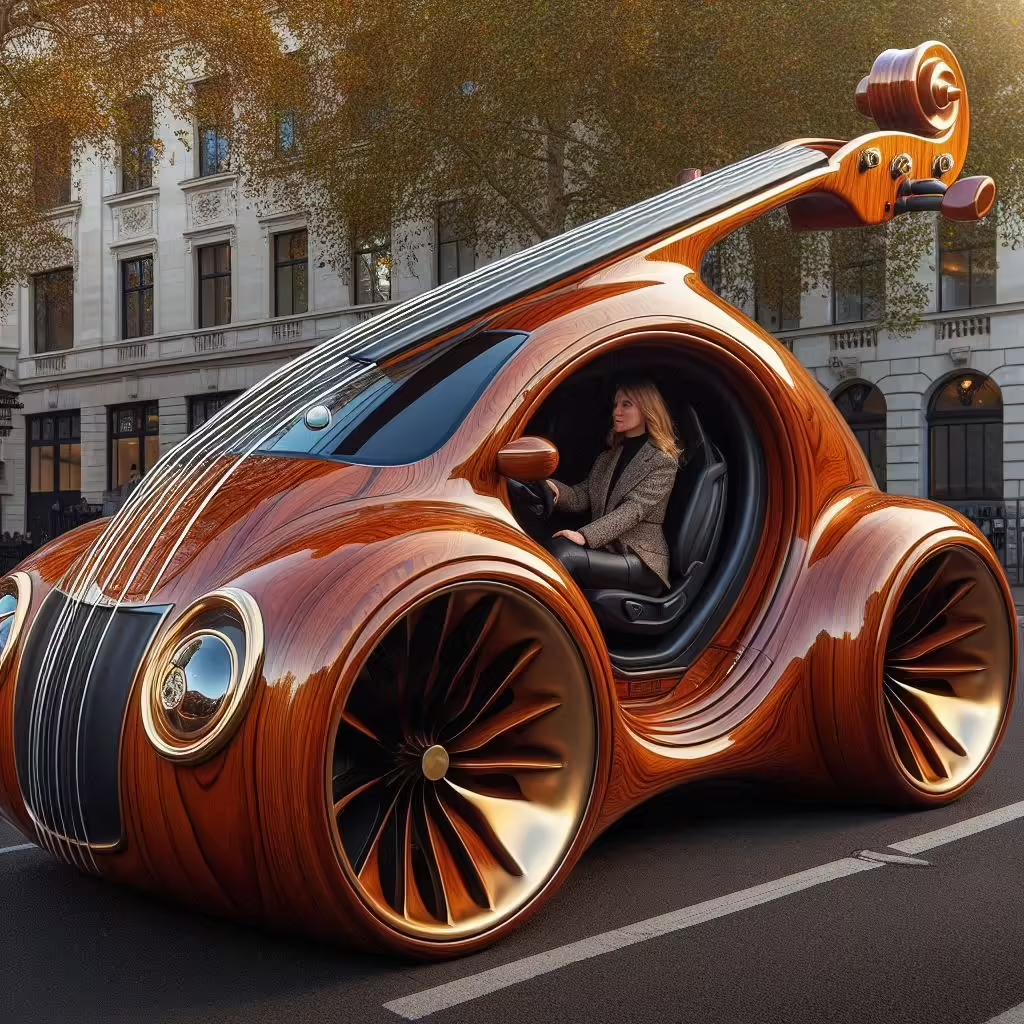The world of automotive design is often seen as a battleground for creativity, functionality, and aesthetics. From the sleek curves of luxury sports cars to the rugged lines of off-road vehicles, every car tells a story. But among the myriad of shapes and styles, one design concept stands out not just for its beauty but for the profound symbolism it carries—the Cello Shaped Car. This article delves into the unique appeal and innovative aspects of the Cello Shaped Car, exploring how this design represents a fusion of art, technology, and the essence of music.

The Intersection of Music and Automotive Design
The automobile industry has long been a canvas for artistic expression, where engineers and designers push the boundaries of form and function. Traditionally, cars are designed with aerodynamics, safety, and performance in mind, but in recent years, a new trend has emerged—designs that evoke emotion and cultural significance. The Cello Shaped Car is a prime example of this trend, where the elegance and sophistication of a cello are seamlessly integrated into the structure of a vehicle.
The cello, with its graceful curves and rich, resonant sound, is often considered the most human-like of all musical instruments. Its shape, reminiscent of the human body, is not just functional but also deeply symbolic. By translating the cello’s form into an automobile, designers are not merely creating a vehicle; they are crafting a moving sculpture that embodies elegance, emotion, and innovation. This article will explore the various aspects that make the Cello Shaped Car a unique and compelling addition to the world of automotive design.
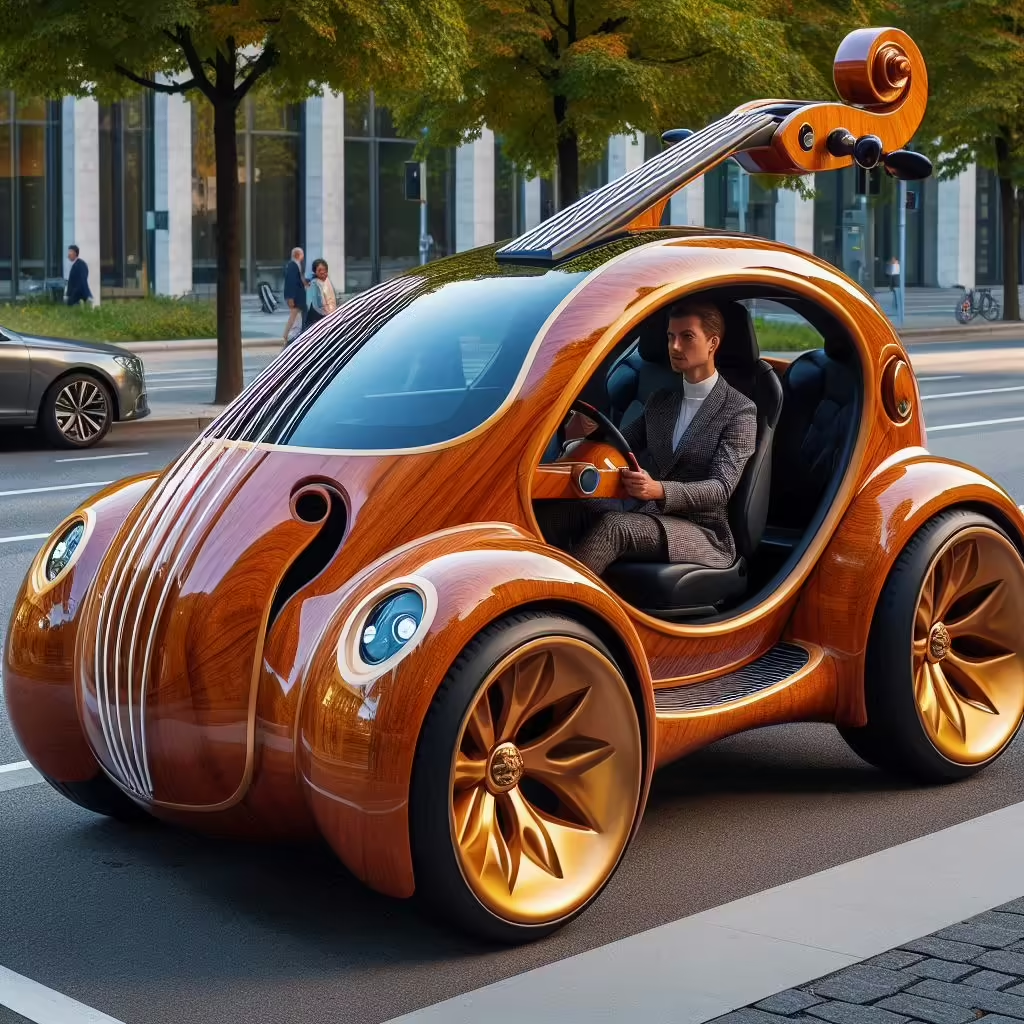
The Unique Appeal of the Cello Shaped Car
Aesthetic Elegance: The Art of Visual Harmony
The first and most striking feature of the Cello Shaped Car is its aesthetic appeal. The design captures the essence of the cello’s graceful curves, translating them into a form that is both elegant and dynamic. The smooth, flowing lines of the car’s body evoke the silhouette of a cello, creating a sense of movement even when the car is at rest. This visual harmony is achieved through meticulous attention to detail, where every curve and contour is carefully sculpted to reflect the instrument’s natural beauty.
The Cello Shaped Car is not just a vehicle; it is a work of art. The design challenges conventional notions of what a car should look like, offering a fresh perspective that blends the worlds of music and automotive engineering. The car’s exterior is a testament to the power of design to evoke emotion and create a connection with the viewer. It appeals to those who appreciate the finer things in life, those who seek beauty in every aspect of their existence.
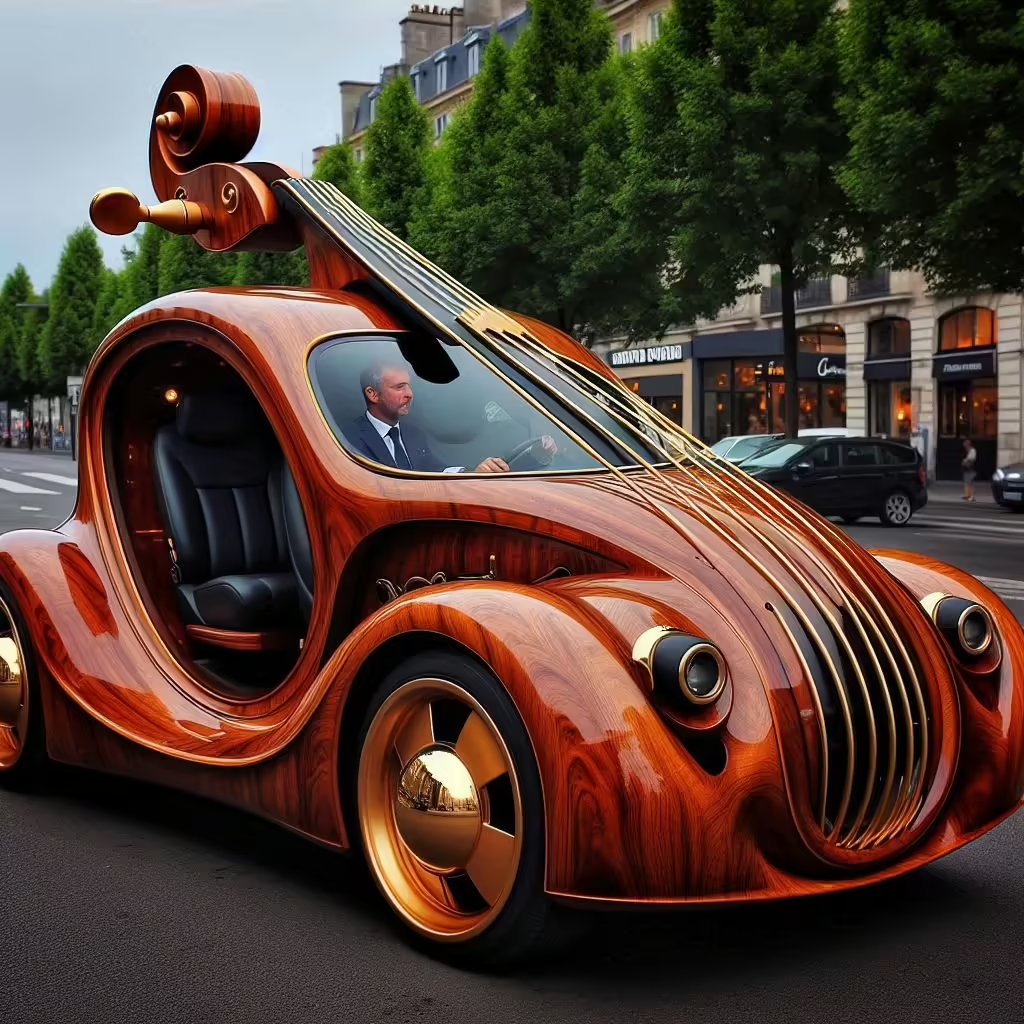
Symbolism and Cultural Significance
Beyond its visual appeal, the Cello Shaped Car carries a deep cultural and symbolic significance. The cello, as an instrument, has a long and storied history. It has been a symbol of refinement, culture, and artistic expression for centuries. By incorporating the cello’s shape into an automobile, designers are making a statement about the importance of art and culture in our daily lives.
The Cello Shaped Car represents a fusion of two worlds—music and automotive design. It is a celebration of the human spirit’s creative potential, a reminder that innovation is not just about technology but also about connecting with our cultural heritage. The car speaks to a desire for a deeper, more meaningful experience, where the lines between art, design, and technology are blurred.
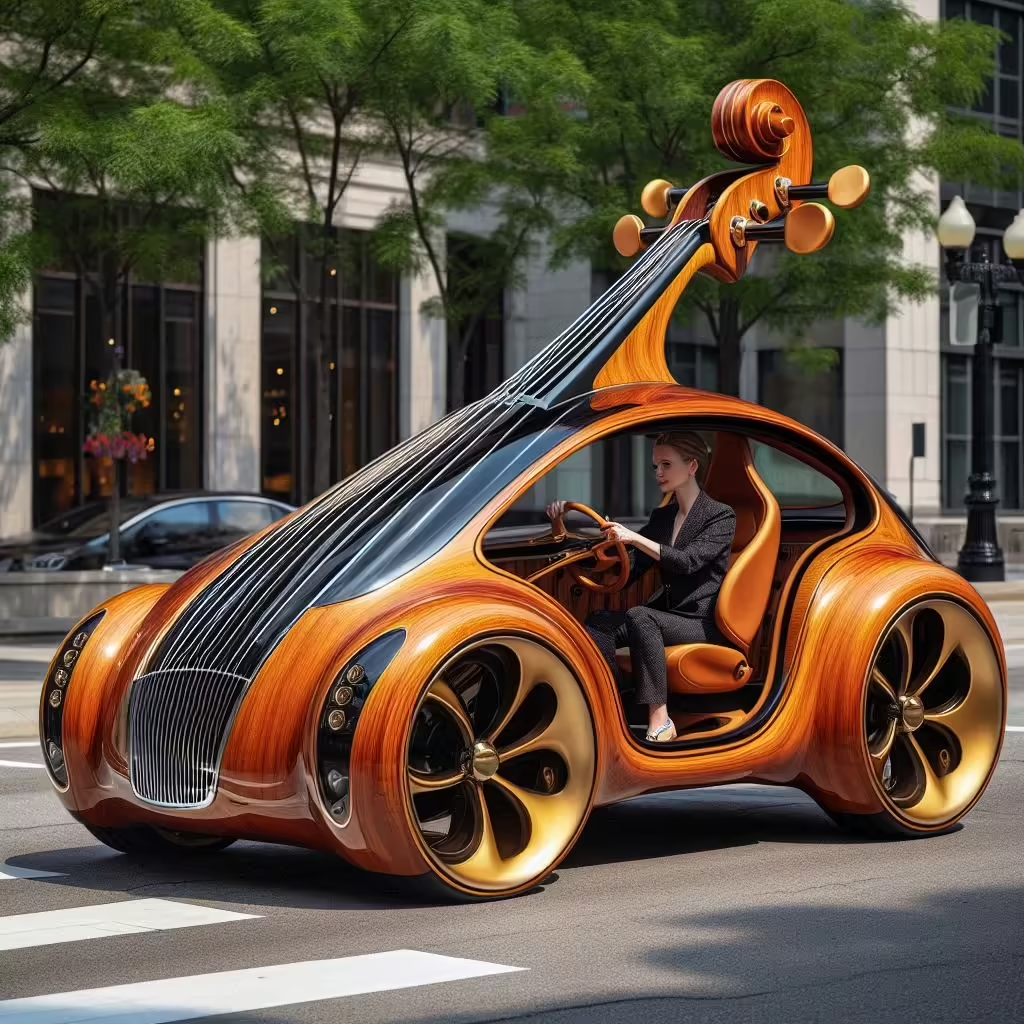
Emotional Connection: The Power of Music on Wheels
One of the most compelling aspects of the Cello Shaped Car is its ability to evoke an emotional response. Music has a unique power to move us, to stir our emotions, and to connect us with something greater than ourselves. The Cello Shaped Car taps into this power by embodying the essence of music in its design. Driving this car is not just a means of transportation; it is an experience that engages the senses and touches the soul.
The car’s design invites us to slow down, to appreciate the beauty around us, and to find joy in the simple act of driving. It reminds us that life is not just about reaching a destination but also about enjoying the journey. The Cello Shaped Car is a vehicle for those who seek to live life with passion and purpose, who understand that true elegance lies not just in appearance but in the experiences we create.
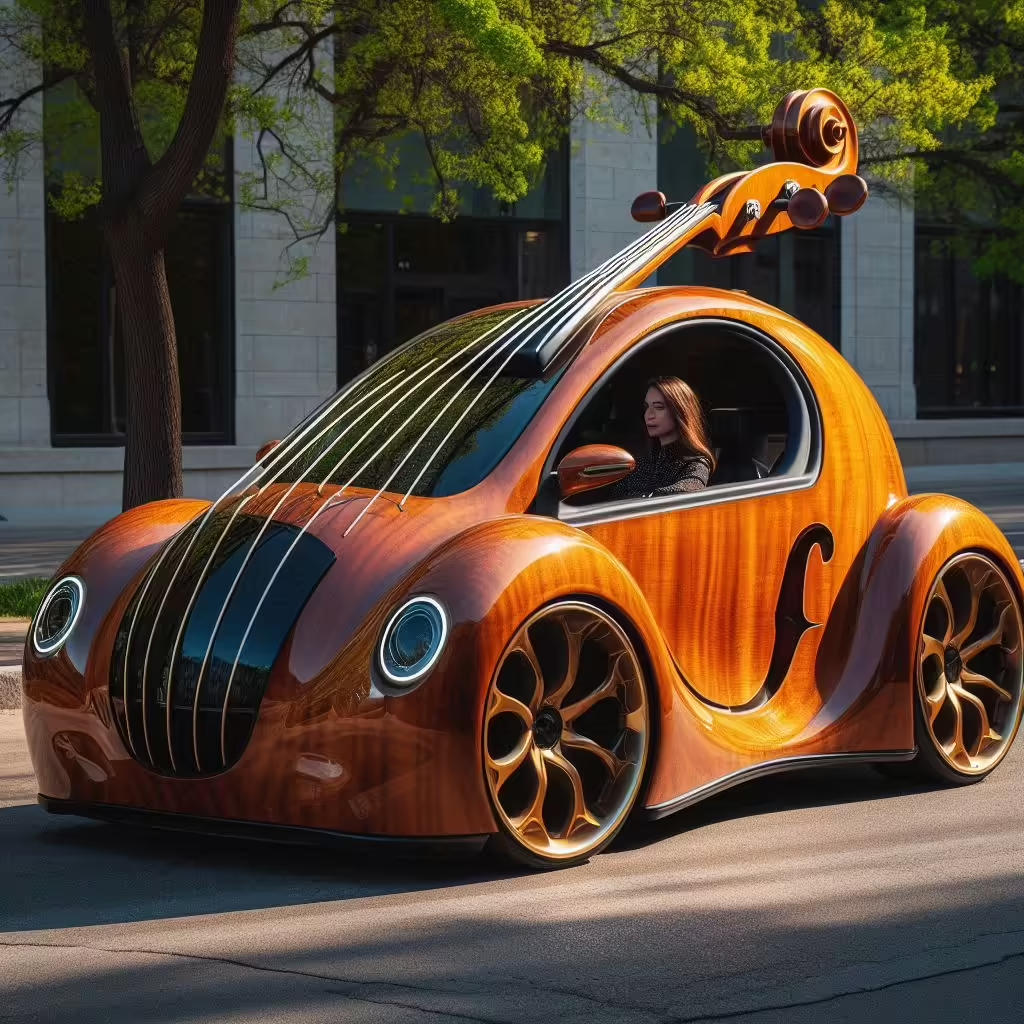
Innovation in Design and Technology
Engineering Excellence: Marrying Form with Function
While the Cello Shaped Car is undoubtedly a work of art, it is also a marvel of engineering. The challenge of designing a car that embodies the shape of a cello while maintaining functionality and performance is no small feat. Engineers had to carefully balance aesthetics with practicality, ensuring that the car’s unique form did not compromise its performance on the road.
The car’s structure is designed to be both lightweight and strong, using advanced materials such as carbon fiber and aluminum to reduce weight while maintaining rigidity. The aerodynamic shape, inspired by the cello’s curves, minimizes drag and enhances fuel efficiency. The result is a car that not only looks stunning but also performs at the highest level.
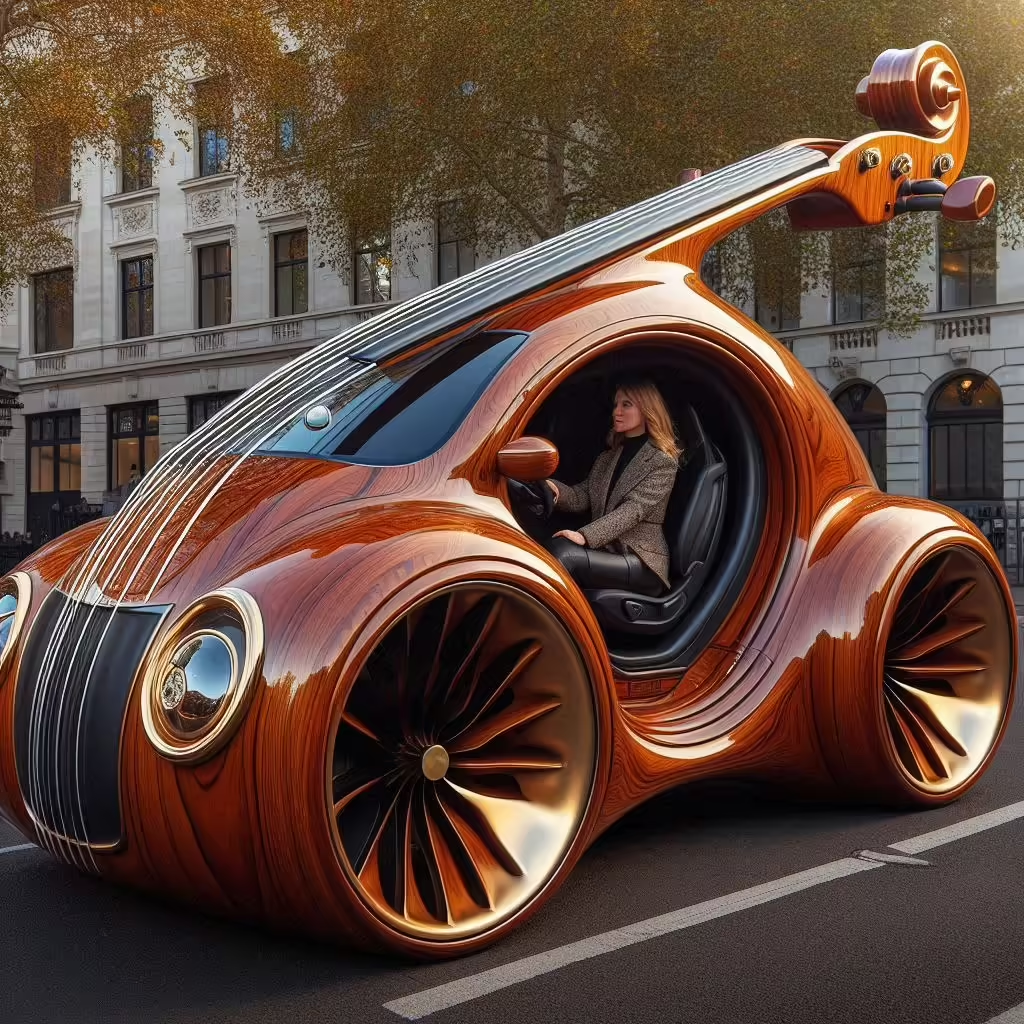
Innovative Technology: A Symphony of Modern Features
The Cello Shaped Car is not just about looks; it is also packed with cutting-edge technology. The interior of the car is designed to provide a luxurious and immersive experience, with features that enhance both comfort and performance. From advanced driver assistance systems to state-of-the-art infotainment, the car is equipped with everything a modern driver could need.
One of the standout features of the Cello Shaped Car is its bespoke sound system, designed to replicate the rich, resonant tones of a cello. The speakers are strategically placed throughout the cabin to create a surround sound experience that envelops the driver and passengers in music. This attention to detail extends to every aspect of the car’s design, making it a truly unique and innovative vehicle.
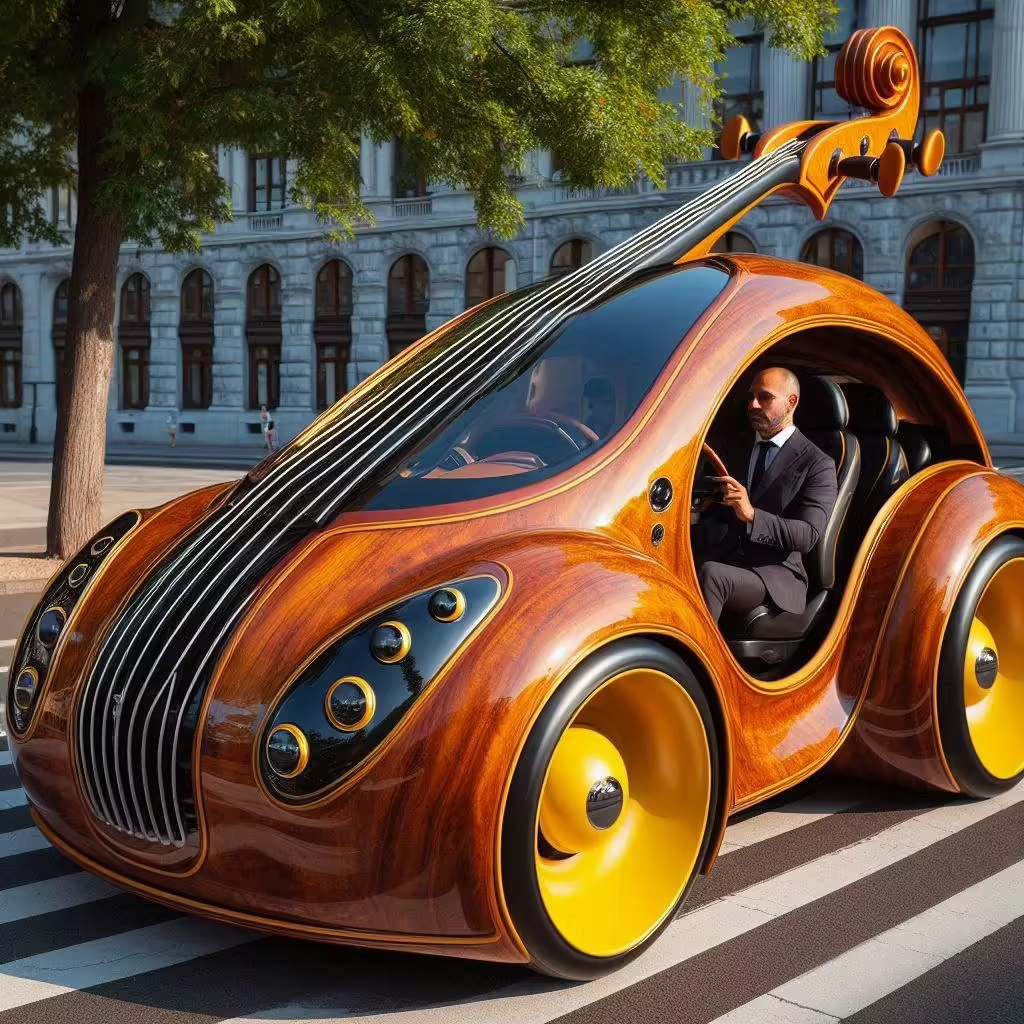
Sustainability and Environmental Impact
In today’s world, sustainability is a key consideration in automotive design. The Cello Shaped Car is no exception. The car is designed with eco-friendly materials and processes, ensuring that its impact on the environment is minimized. From the use of recyclable materials to energy-efficient manufacturing processes, every aspect of the car’s production is designed with sustainability in mind.
In addition, the car is equipped with a hybrid or electric powertrain, reducing its carbon footprint and making it a more environmentally friendly option. This commitment to sustainability is a reflection of the broader trend in the automotive industry towards greener, more responsible design. The Cello Shaped Car is not just a symbol of elegance and innovation; it is also a statement about the importance of protecting our planet for future generations.
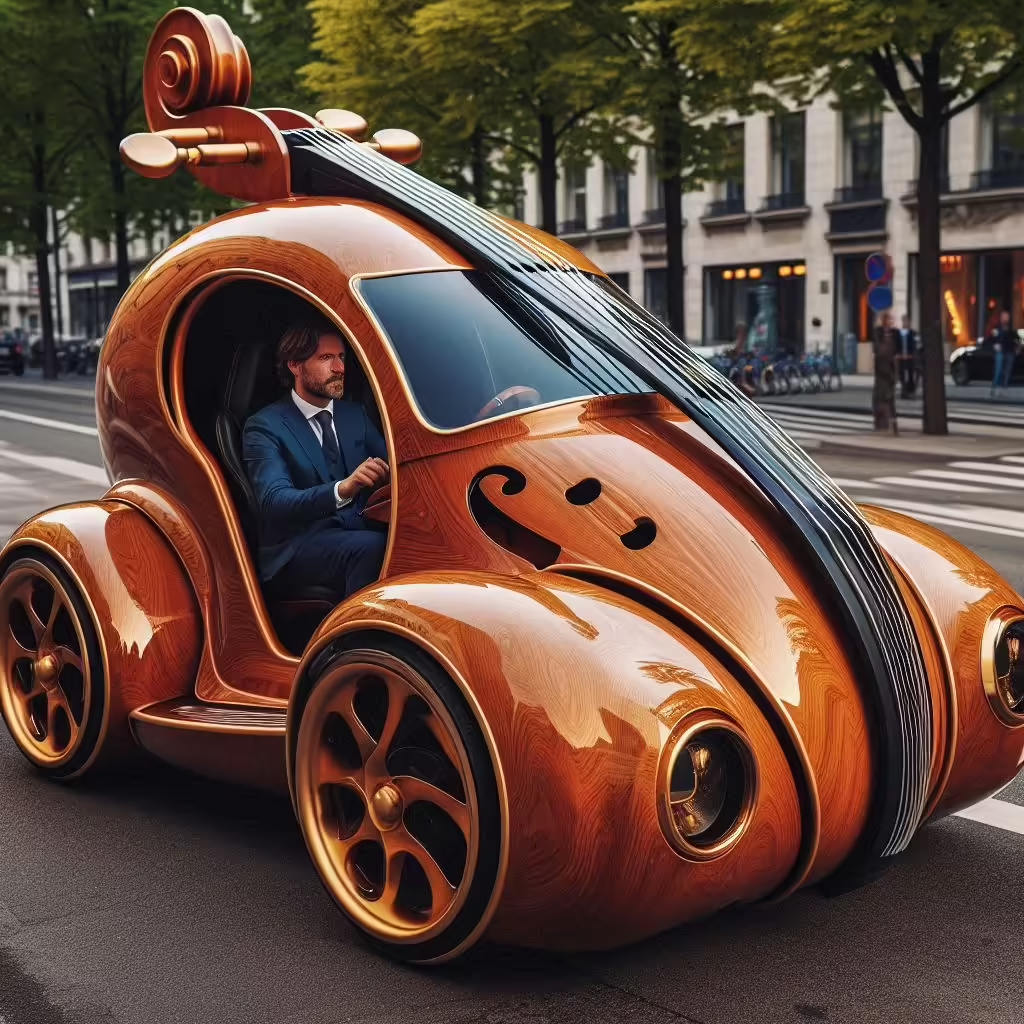
The Market Appeal and Future of Cello Shaped Cars
Target Audience: A Niche Market for Connoisseurs
The Cello Shaped Car is not a mass-market vehicle; it is a niche product designed for a specific audience. This car appeals to connoisseurs—those who appreciate the finer things in life and who are willing to invest in a vehicle that is as much a piece of art as it is a mode of transportation. The target market for the Cello Shaped Car includes art collectors, music lovers, and individuals who value unique, handcrafted products.
For these buyers, the Cello Shaped Car is more than just a car; it is an expression of their identity, a reflection of their taste and values. Owning a Cello Shaped Car is a statement about one’s appreciation for art, culture, and innovation. It is a way to stand out from the crowd, to own something truly unique and special.
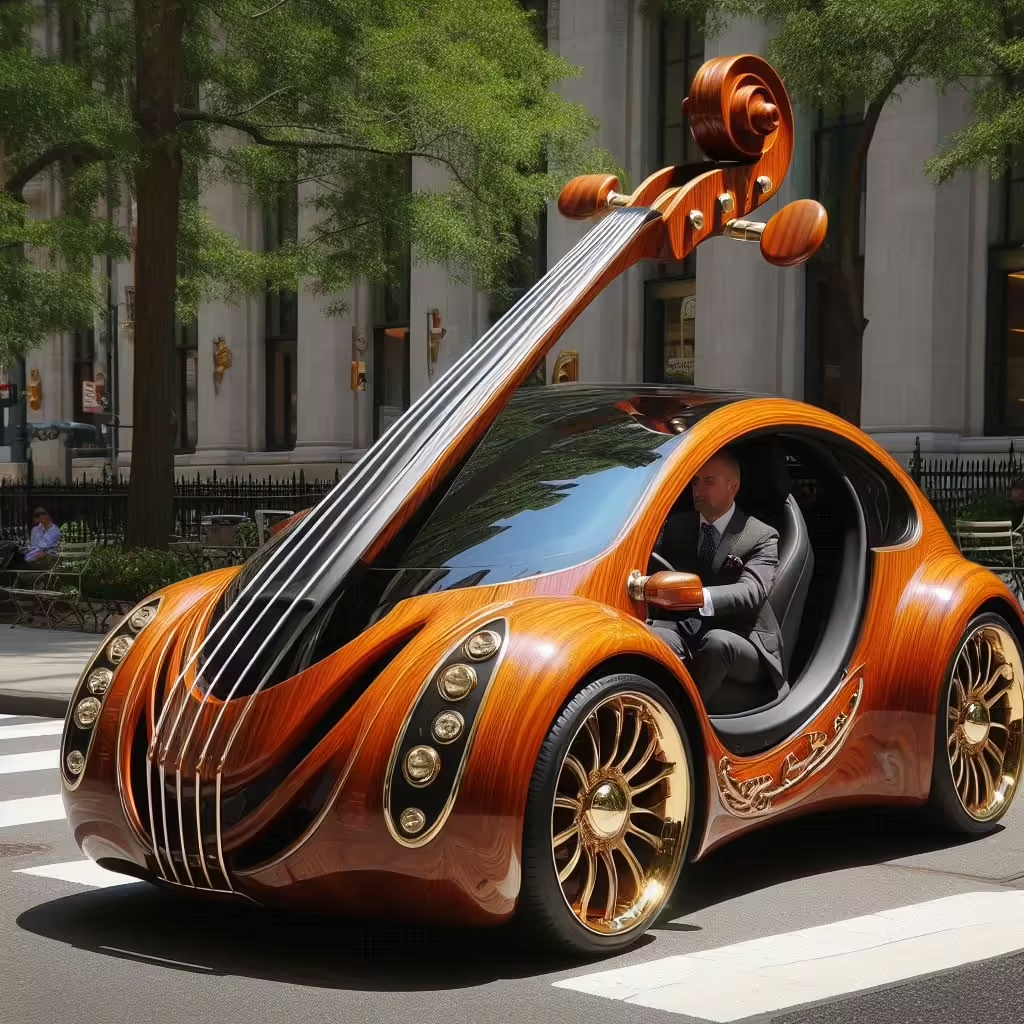
Limited Edition: The Exclusivity Factor
To maintain its appeal as a luxury item, the Cello Shaped Car is produced in limited quantities. This exclusivity adds to the car’s allure, making it a highly sought-after item for collectors and enthusiasts. Each car is individually crafted, with a high level of customization available to meet the specific preferences of the buyer.
This limited production run ensures that the Cello Shaped Car remains a rare and valuable item, further enhancing its status as a luxury product. The car’s rarity, combined with its unique design and innovative features, makes it a must-have for those who appreciate the art of automotive design.
Future Prospects: The Evolution of Art in Automotive Design
The Cello Shaped Car represents a new direction in automotive design—one where art, culture, and technology converge to create something truly extraordinary. As the automotive industry continues to evolve, we can expect to see more designs that challenge conventional notions of what a car should be. The success of the Cello Shaped Car could pave the way for other music-inspired vehicles, each with its own unique appeal and cultural significance.
Moreover, as consumers increasingly seek products that reflect their individuality and values, the demand for bespoke, art-inspired vehicles is likely to grow. The Cello Shaped Car is at the forefront of this trend, offering a glimpse into the future of automotive design where innovation and elegance go hand in hand.
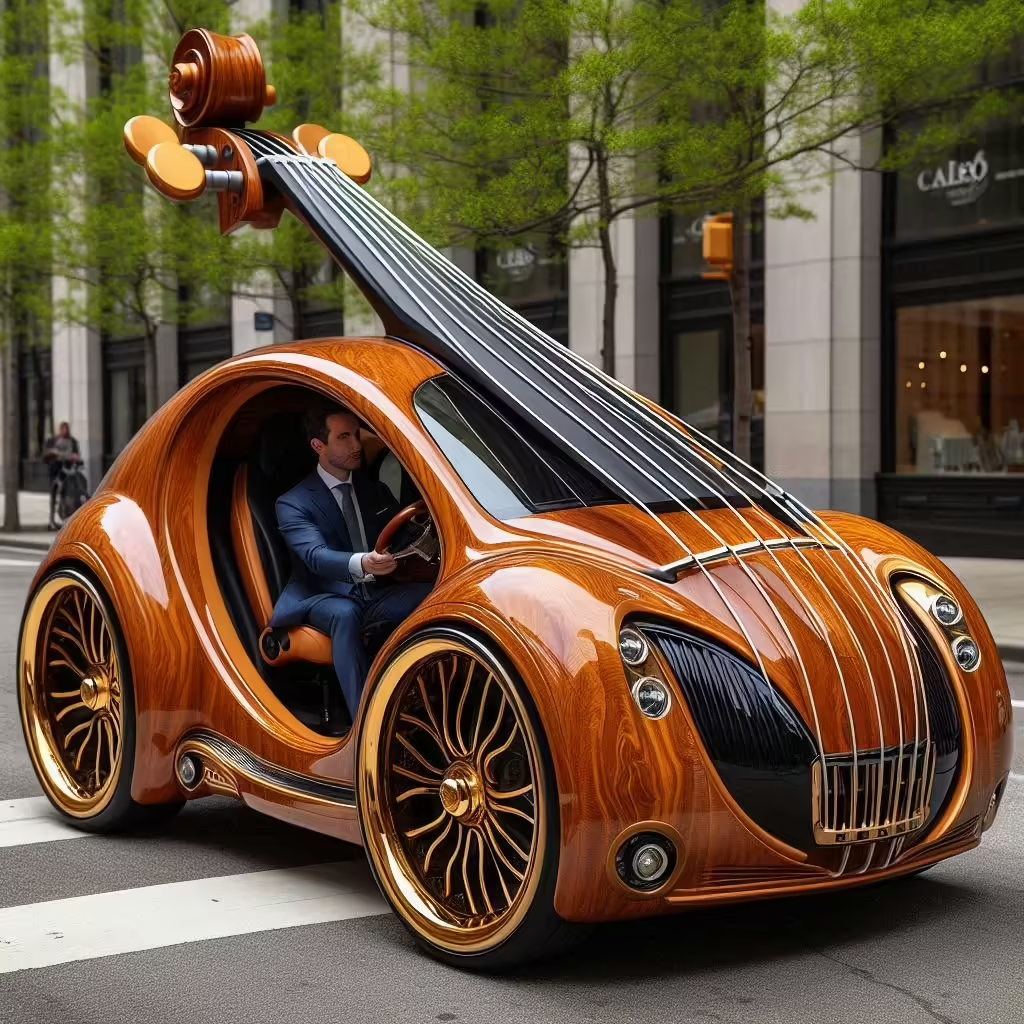
The Cello Shaped Car—A Masterpiece on Wheels
In a world where cars are often viewed as mere machines, the Cello Shaped Car stands out as a masterpiece on wheels. It is a testament to the power of design to evoke emotion, to connect us with our cultural heritage, and to create something truly unique and special. The Cello Shaped Car is not just a vehicle; it is a work of art, a symbol of elegance, and a statement about the importance of innovation in design.
This car appeals to those who appreciate the finer things in life, who seek beauty and meaning in every aspect of their existence. It is a car for connoisseurs, for those who understand that true luxury is about more than just material wealth—it is about the experiences we create, the connections we make, and the legacy we leave behind.
As the automotive industry continues to evolve, the Cello Shaped Car serves as a reminder that innovation is not just about

